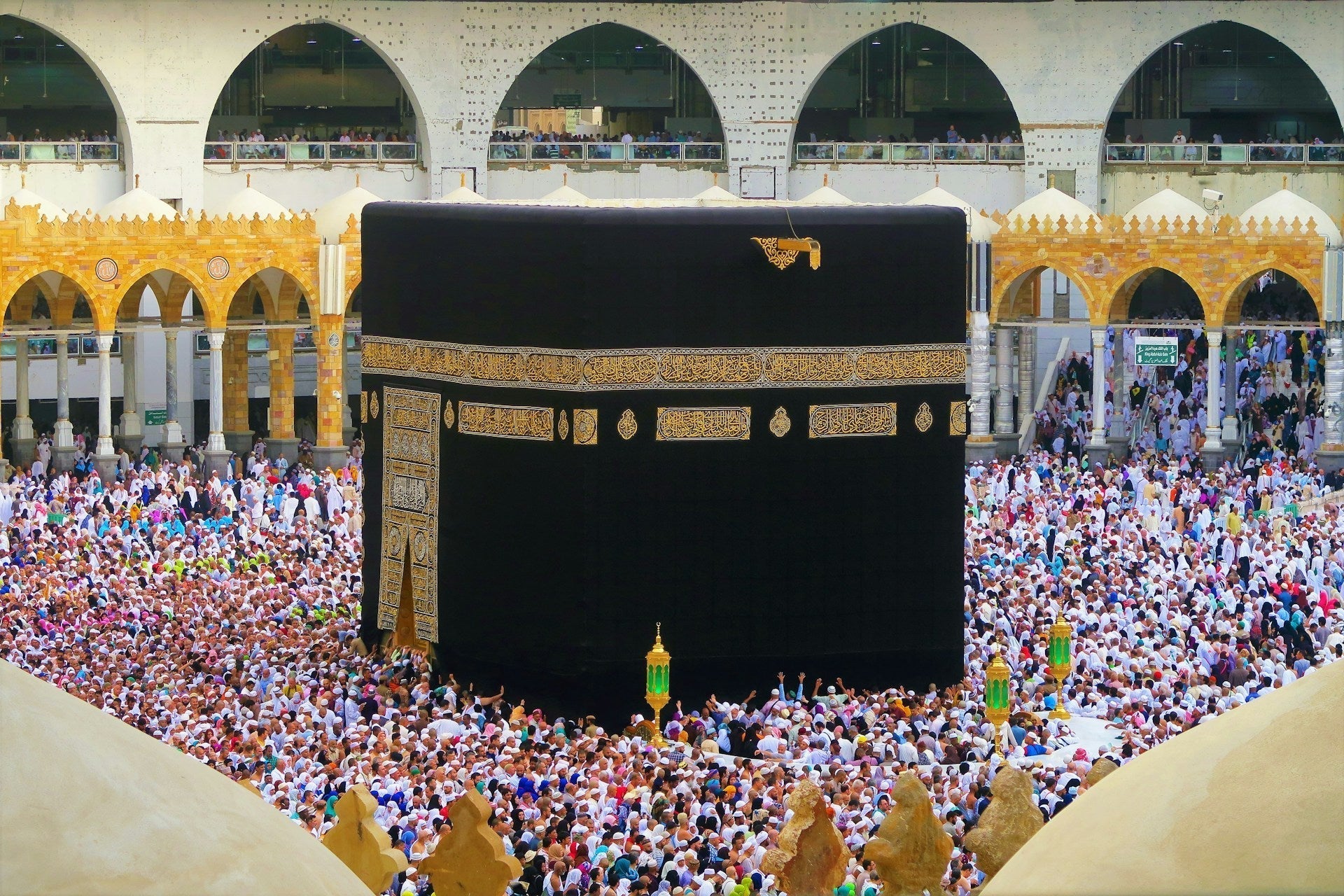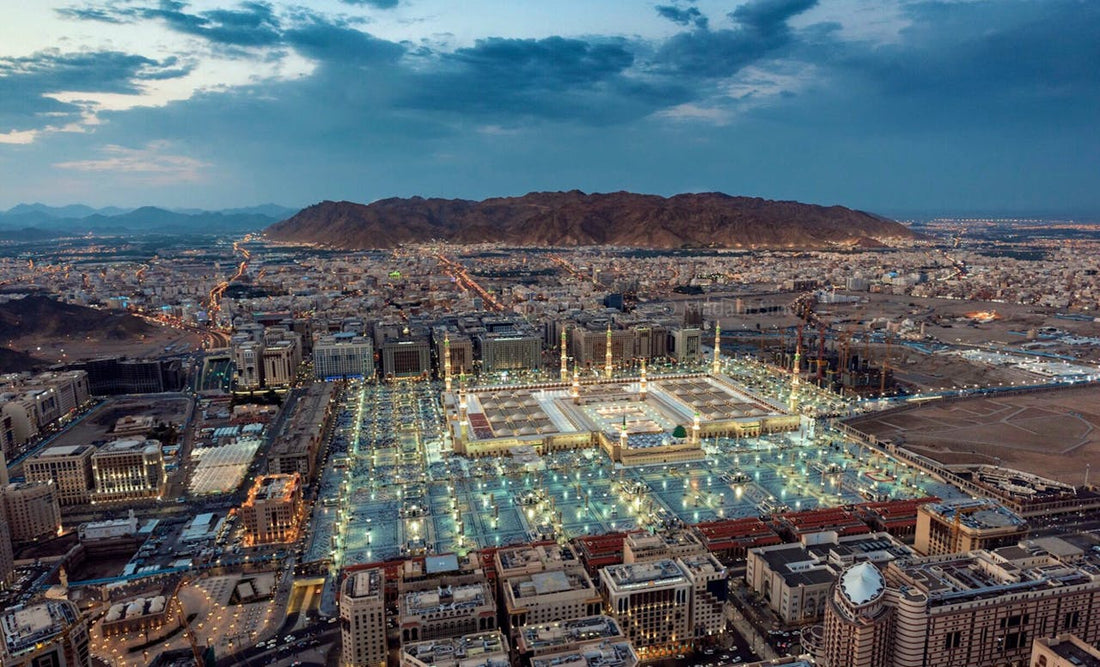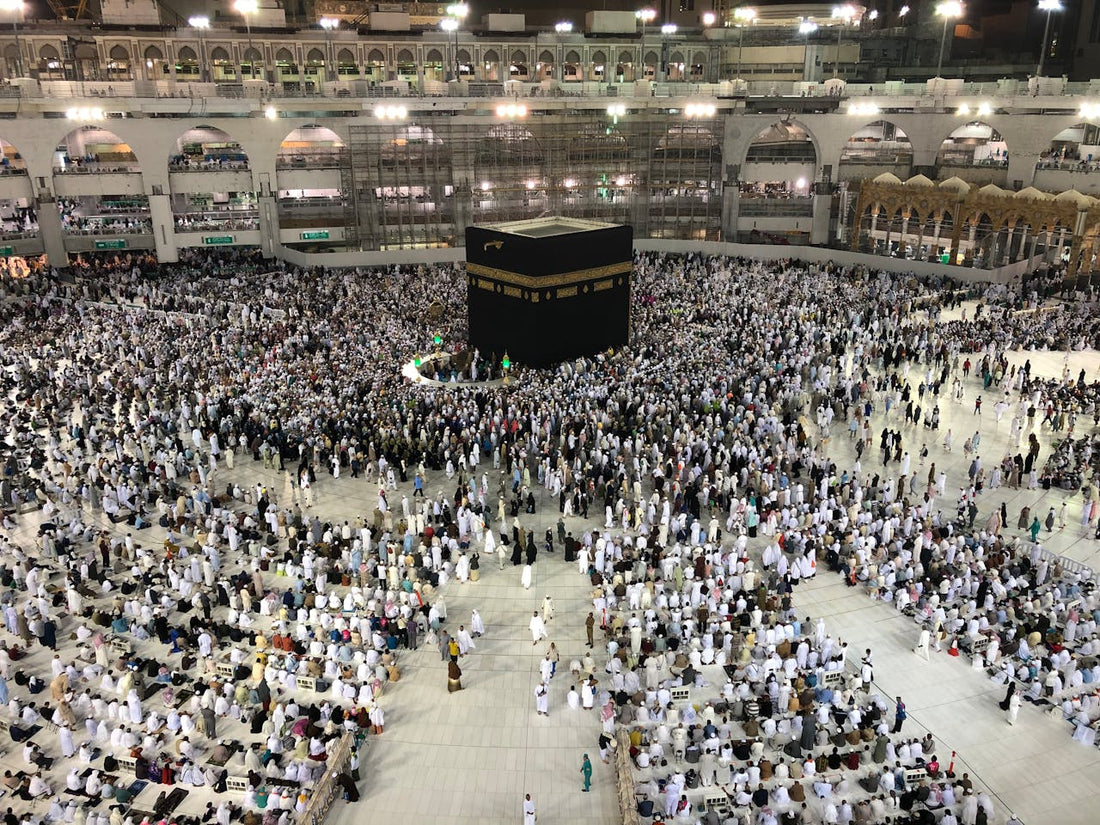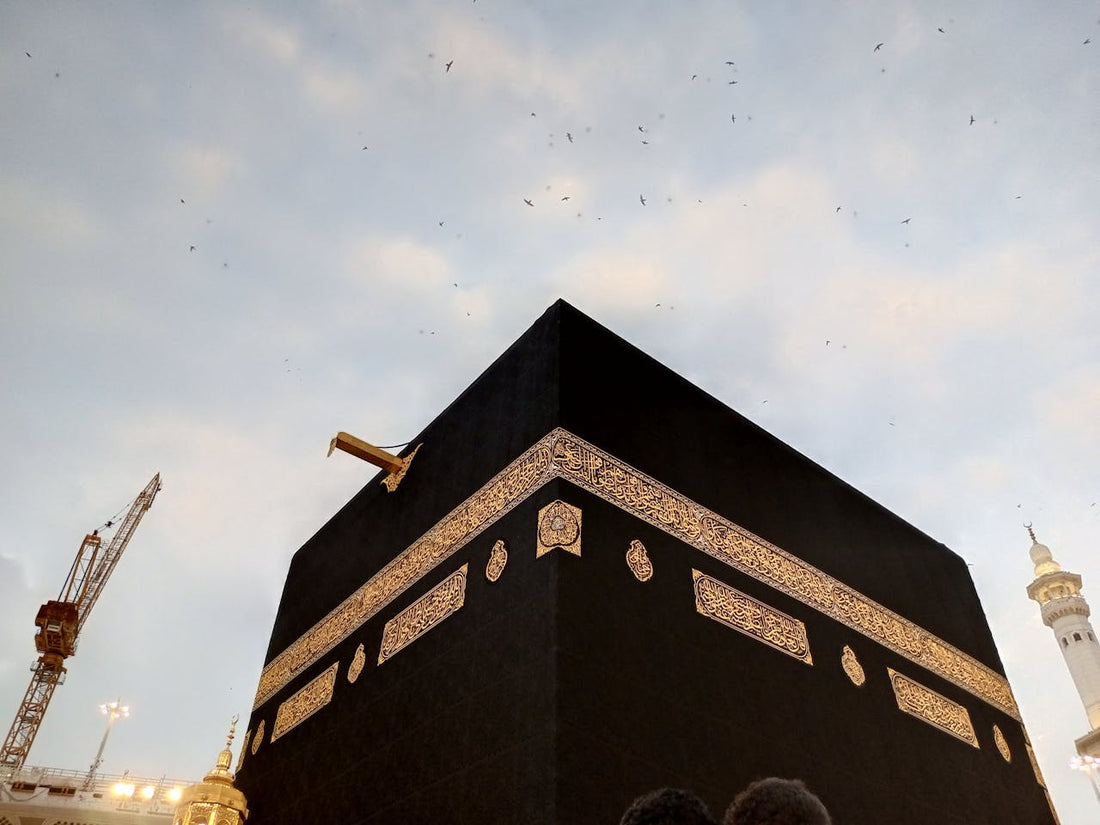Many pilgrims visiting the Kaaba wonder, “Can you do tawaf without umrah”?
The answer is yes.
Tawaf, which refers to circling the Kaaba seven times in a counter-clockwise direction, is not exclusive to Umrah or Hajj.
You can perform tawaf at any time during your visit to Masjid al-Haram, even if you are not performing Umrah.
This type of circumambulation is called Nafl Tawaf, and it is a gratifying voluntary act of worship that can be performed with or without being in Ihram.
However, you must be in a state of wudhu (ablution) to do tawaf, and the ritual must be completed respectfully and correctly.
Different Types of Tawaf
The term tawaf applies to multiple types of circumambulation around the Kaaba, each serving a specific purpose within Islamic rituals.
Whether tied to performing Umrah, Hajj, or voluntarily, each has its guidelines and timing. The following are the most recognised forms of tawaf:
Tawaf al-Umrah
Tawaf al-Umrah is a fundamental part of performing Umrah and cannot be skipped. It must be performed after entering a state of Ihram, which involves wearing prescribed garments (Ihram clothing), making the niyyah (intention), and passing through a miqat point.
The pilgrim then enters the Mataf area, begins at the Tawaf starting point (marked by the Tawaf green light or the Black Stone), and completes seven full rounds.
The recitation of Umrah dua should accompany this tawaf and ends with the two-unit prayer behind Maqam Ibrahim, followed by Sa’i and hair trimming or shaving.
Tawaf al-Qudoom
Also known as the “Tawaf of Arrival,” Tawaf al-Qudoom is a Sunnah tawaf recommended for those who arrive in Mecca to perform Hajj.
It serves as a way of spiritually entering the sanctity of the city and its rites. While it is not obligatory, many scholars consider it highly rewarding.
It is performed before standing at Arafah, and like other types, it involves seven rounds in the Mataf.
This tawaf is not required for those performing Hajj Tamattu (Hajj combined with Umrah) since they already perform Tawaf al-Umrah earlier in their journey.
Those performing Hajj Qiran or Ifrad, however, often observe it as a gesture of devotion and to settle into their pilgrimage mindset.
Tawaf al-Ifada
Tawaf al-Ifada is one of the three essential pillars of Hajj and must be performed to be considered valid.
It takes place after the Day of Sacrifice (10th Dhul Hijjah), following the completion of rituals in Mina, such as animal sacrifice and hair trimming. The pilgrim returns to Masjid haram and performs this tawaf in a state of Ihram.
It is also referred to as Tawaf az-Ziyarah (Tawaf of Visit), and scholars agree that it must be completed by the 12th of Dhul Hijjah, though the ideal time is on the 10th.
It is followed by Sa’i (if not already done earlier) and is usually the most crowded and physically intense ritual.
Every effort must be made to remain in a state of wudhu and observe proper behaviour throughout this tawaf. Missing Tawaf al-Ifada invalidates Hajj.

Tawaf al-Wida
Also called the “Farewell Tawaf,” this is the final ritual that pilgrims perform before leaving Mecca.
Tawaf al-Wida is obligatory for all non-resident pilgrims and acts as a spiritual sendoff, symbolising a respectful goodbye to the sacred land. It reminds pilgrims of their temporary stay and the sanctity of the Haram.
Women experiencing menstruation are exempt from this requirement.
No Sa’i follows this tawaf, which must be the last act performed in Masjid haram. Therefore, shopping or visiting other places should be avoided after performing Tawaf al-Wida.
It includes the same seven rounds and is ideally performed with calmness, sincerity, and focused dua to Allah (سبحانه وتعالى) for the acceptance of all Hajj and Umrah acts.
Nafl Tawaf
Nafl or voluntary tawaf can be performed whenever you visit the Haram. It is a way to gain spiritual reward outside the requirements of Hajj or Umrah.
Men and women can perform it multiple times daily, provided they are in a state of wudhu.
It is also a way to express gratitude to Allah (سبحانه وتعالى) and feel closer to Him.
How to Perform Nafl Tawaf
Here are the steps for how to perform tawaf as a voluntary act:
- Make a silent intention (niyyah) for Nafl Tawaf
- Perform wudhu before entering the Mataf.
- Stand facing the Black Stone or Tawaf starting point.
- Begin tawaf and circle the Kaaba seven times in a counterclockwise direction.
- Recite any dua or supplication during the walk.
- After completing seven rounds, perform 2 Rakat after Nafl Tawaf behind Maqam Ibrahim.
- Drink Zamzam water and make further supplications.
Nafl Tawaf Rules
- If you're wondering about Nafl Tawaf rules, they are straightforward:
- You must be in a state of wudhu
-
Dress modestly; women should wear a cover, and men should wear proper clothing.
- You do not need to wear Ihram clothing, but cleanliness is necessary.
- It can be done at any time of the day or night.
- Avoid pushing or shoving other pilgrims.
- Make sincere supplications and keep a humble demeanour.
- No specific Umrah dua is required.
What Makes Tawaf Invalid?
Tawaf becomes invalid if one breaks wudhu, skips a round, engages in disruptive behaviour, or violates sacred boundaries.
Invalidating acts also include touching the Kaaba inappropriately or speaking about non-religious matters during the act.
For example, if a person is not in a state of wudhu or physically harms another pilgrim, their tawaf may be invalidated.
Can You Do Tawaf Without Ihram?
Yes, you can. This question often arises for those planning to perform a nafl tawaf.
As long as you are not doing Umrah or Hajj, you are not required to wear Ihram. However, you must dress modestly and be in a state of ritual purity.
Difference Between Umrah and Tawaf
The difference between Umrah and Tawaf lies in scope and obligation.
Tawaf is a part of Umrah, but Umrah includes several other rituals like Sa’i between Safa and Marwah, shaving or trimming hair, and entering a state of Ihram.
Tawaf can be performed independently, whereas Umrah is a pilgrimage with multiple steps.
How Many Tawaf Can You Do in a Day?
There is no limit to how many tawaf you can do daily. You may perform as many rounds as you wish as long as you are physically able and in a state of wudhu.
Some pilgrims complete multiple tawafs daily, especially when the Mataf area is less crowded.
Each set of seven circuits offers great reward and brings a person closer to Allah (سبحانه وتعالى). Just be mindful of your energy and the safety of others, especially during busy periods like Hajj 2025.
Frequently Asked Questions
Can you do nafl tawaf for someone else?
Yes, scholars allow performing nafl tawaf on behalf of a deceased person or someone unable to perform it due to illness.
You must make a clear intention before beginning.
Should you perform 2 Rakat after Nafl Tawaf?
Yes, it is Sunnah to perform 2 Rakat after Nafl Tawaf behind Maqam Ibrahim if space allows.
This prayer seals your worship and brings added reward.
Can we do voluntary tawaf?
Yes. Nafl or voluntary tawaf is a great way to gain spiritual rewards.
It is not limited to Hajj or Umrah seasons and can be done whenever you visit Masjid Haram.
Can you visit the Kaaba without doing Umrah?
Absolutely. You can visit the Kaaba for prayers and voluntary acts like tawaf, even if you are not performing Umrah.
This applies to residents and visitors alike.
Can you touch the Kaaba without doing tawaf?
Yes, touching the Kaaba or its Kiswah is allowed if done respectfully, but it is not a required part of tawaf.
Many pilgrims seek barakah by placing their hands gently on its walls.
Summary – Can You Do Tawaf Without Umrah
To conclude, you can do tawaf without performing Umrah. This type of tawaf is known as nafl tawaf and is open to any Muslim in a state of wudhu and proper attire.
You do not need to be in Ihram or follow the other rituals of Umrah.
Whether you are learning to do tawaf, curious about Tawaf green light signals, or aiming to perform Tawaf wada before leaving, voluntary circumambulation remains significant.
It’s ideal for those who want to stay spiritually engaged while visiting Mecca, especially during Hajj 2025 or anytime the Performing tawaf areas are open.
Always consult a trusted Umrah guide and prepare with correct knowledge before your trip.




